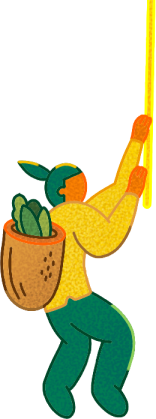About the Author:
Study Comic Reading and Creation in Angoulême and Comic Publication in Brussel; worked with French alternative manga publisher, Le Lézard Noir. Comics's been haunting Ping-Lu for decades and will never end. Reside in Europe but dedicate herself to Asia. IG account: @cases.clubs open to any comments.
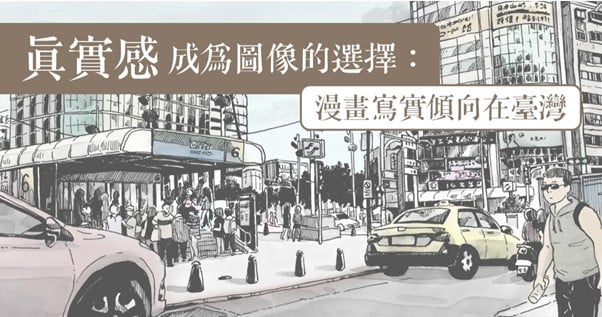
“Realistic comics is, in fact, a genre, and its units can be as large as the world, or as small as a company department, family, or individual. Let me put it this way, if I drew DEMO in the style of realistic comics, then it would be necessary for it to conjure a sense of déjà vu as a comic of ‘a certain city’ or ‘a certain real person’.”—ROCKAT, in an interview in Liho Taiwan in November 2016.
The meaning of realism, in the eyes of Taiwanese artist ROCKAT, is really to present an object of reference, even if that reference is nameless. The “object” of reference seems to be indispensable in the creative process, as an artist captures the form of the referenced object and then realizes and represents it in his or her work. Whether or not this “object of reference” comes from reality, mixed memory, or complete imagination and unconsciousness, it has already been transformed and translated by the creator as an object in the comic; however, if readers, based on own understanding of the referenced object, are able to identify a certain “real, existing image” through the pictorial representation, can we, then, say that some authors’ creative works are “realistic”?
What I want to discuss here is a kind of “realistic” inclination of pictures in Taiwanese comics. In fact, from the 1980s to 1990s, some comic artists, who got their big breaks on Joy Comics, such as Joe Tseng, Ah Tui, and Chen Hung-yao, were already obsessed with this sense of reality, creating characters and sceneries that exuded a sense of “déjà vu” as if there were real objects of reference. However, this realism, perhaps more precisely speaking, is a kind of mimesis of the ideal image, which is based on the real structure of the human body or change in volume, and idealized and transformed into a simulation. Just like Ah Tui’s representation of volume in his depiction of character and Chen Hung-yao’s facial structure or detailed depiction of human body; however, these images still differed from real human, because in addition to the silhouette, our cognition of objects also involve color and textures, which are information that black-and-white comics cannot fully present. In fact, regarding the presentation of reality, when the pictures depict more details (such as interwoven lines, light and shadow), they have already created a realistic effect to the eyes of readers, for real sceneries and objects are never pure white.
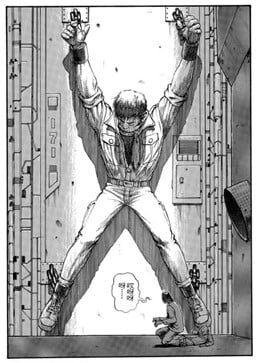
Coincidently, these Taiwanese comic artists seem to have inherited this kind of realism constructed on depiction of details from authors of “nouveau réalisme” in Europe, such as Mœbius (Note 1). This trend of realism was first initiated by a group of artists, such as Bazooka or Jean Teulé, in the 1960s, who echoed modern society and used photorealist techniques and paintings to present interwoven styles. Interestingly, French authors at the time used realistic style to represent detective stories or anecdotes, sharing a similar course of development with the fictional stories expressed by Taiwanese artists in the 1990s (such as Ah Tui’s sci-fi comics, Joe Tseng’s military stories, and the comedic and humorous comics by other artists).
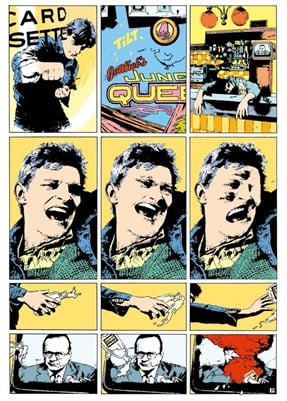
However, the realistic inclination of Taiwanese comics perhaps did not emerge out of the respect for Europe and America; it was an attempt to achieve differentiation in the market. Not only because it was easier for the more difficult realistic creative techniques to earn higher praises, but this style could also differentiate itself from the pirated Japanese comics in the market and hand-copied comics in earlier periods. Thus, amidst the trend of realistic styles emerged in the 1990s, some publishers and authors wanted to elevate the status of European and American comics to fight against the commercial Japanese manga (Note 2). Although this might have been a protest against the monopoly of Japanese manga or a reflection of their frustration from being overlooked by the market. This attitude seemed to disregard the diversity of Japanese manga in the development of pictorial expressions. In fact, prior to this, Japanese manga from the late 1950s to 1970s had seen the emergence of the expressive form of “gekiga (lit. dramatic pictures)” that was more realistic (Note 3). Even though some artists of gekiga rarely displayed delicate styles through their expressions, the genre paved the way for realistic artists like Ryōichi Ikegami. By the 1980s, Katsuhiro Ōtomo, who was influenced by Kazuhiko Miyaya and Mœbius, announced the arrival of another era of expression with his delicate depictions (Note 4). However, the market of pirated comics in Taiwan at the time was seemingly unaware of this development of realistic styles in Japanese manga; consequently, readers’ general understanding of Japanese manga remained superficial. Nonetheless, after some works of Japanese manga with more realistic styles gained popularity in the 1990s (such as Slam Dunk), most Taiwanese readers became aware that the basics of realism, like the proportion of the human body and precision of light and shadow, could also be used as criteria to evaluate a comic. Later, we could also see that Ruan Guang-Min, who had a similar style to Takehiko Inoue, also used more realistic pictures to depict heart-warming stories; and the style of Nine Lives Man: Time’s Wheel, a short story adapted by Chang Sheng, resembled the style of Naoki Urasawa, depicting the sense of volume.
Today, with greater attention to the mother locale, a kind of realism with “real references” has become more prominent. Just as previously mentioned ROCKAT, whose work DEMO does not just present precise depictions of objects (depths and shapes), but also his contemplations on the real existences of the “referenced objects.” The work not only features the scenery of Yongkang Street in Taipei, but also depicts the desperation of the characters to move away from the sense of reality that has been built upon imaginations since the 1990s. This adds the author’s unique personal experience to the work. The truth is, after the development of “nouveau réalisme,” not only has Europe embraced the realistic depiction of personal life by authors like Fabrice Neaud, but Japan has also already seen authors, such as Inio Asano, who use photorealist backgrounds to depict personal stories of characters (Note 5). In other words, pictures with a sense of reality not only can pull readers into the virtual world for realistic experience, but also enable readers to immerse in the objective reality of the characters (Note 6), simulating the situations faced by the characters. In short, these realistic stories featuring real sceneries do not just tell the author’s personal experience; compared to the sense of distance of the hardcore fantastic realism. These authors, who emphasize real objects, bring greater approachability, such as Adoor Yeh’s detailed depictions of objects using sophisticated black lines, and Zuo Hsuan’s sceneries of Daxi in Rites of Returning.
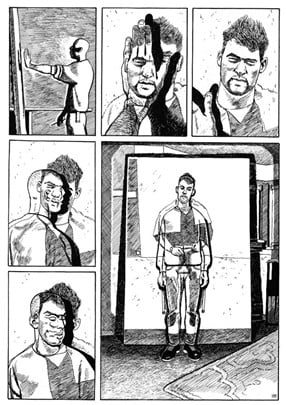
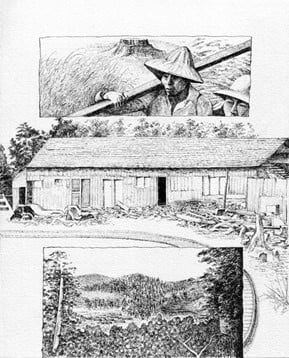
However, we cannot overlook the possible limitations brought by realistic designs. Just as Thierry Groensteen says, “Realism is always a limitation: it suppresses a certain intention, prevents the energy of certain effects, certain pictures. The risk is the rigidizing of oneself in the academic style.” In other words, if the creator puts too much emphasis on the accuracy of structural proportion, he or she might lose personal perspectives; however, when every brushstroke is the creator’s own choice, regardless of being faithful to the real or imagined objects of reference, the pictures will always exude a certain individuality (The authenticity of the use of brushstroke is the topic of another discussion). Nonetheless, when we take a realistic approach, the academic inclination certainly is detrimental to the author’s attempt to develop own unique characteristics. This limitation to some authors in Taiwan perhaps does not exist, as they can make use of the academic studies on light and shadow, colors, forms, and media, to sufficiently assemble their own pictures; for in this age, realistic technique is just a choice, and regarding creation, there are many more expressions for us to freely put together.
Note 1: Argument proposed by Lecigne and Tamine in Fac-simile.
Note 2: The difference in the verdicts on European and American comics and Japanese manga can be found in the preface that announced the suspension of High Comics in 1996.
Note 3: Gekiga Workshop founded by artists including Yoshihiro Tatsumi in 1959 developed stories more suited for adults with themes based on social reality.
Note 4: In Japan’s Eureka magazine, Yoshihiro Yonezawa proposes the periodization of Japanese manga history into “pre- and post-Katsuhiro Ōtomo,” somewhat comparing Katsuhiro Ōtomo to Osamu Tezuka.
Note 5: The technique of realistic background in Japanese manga is not a new development over the past twenty years; Shigeru Mizuki, who started with kamishibai (paper theater) and became well-known after the war, also frequently used realistic backgrounds.
Note 6: The reality referred to here is a kind of photorealism with an inclination towards formal precision. As for realism, there is also emotional realism based on subjective experience, where pictures can be distorted or exaggerated, but these are not within the scope of discussion here.
Original text: https://www.creative-comic.tw/special_topics/97

